The dust and grime were finally starting to settle as the sun set in Iraq.
Marine Cpl. Stephen Berge was in an abandoned factory in Fallujah when he felt the tides turning.
He didn’t know at the time that this second battle of Fallujah he currently was in, also known as Operation Phantom Fury, would become known as the bloodiest battle of the Iraq War.
But he did have a feeling in his gut he would be going home soon.
It was Thanksgiving Day. And Berge was sitting down to his first hot meal since the Marines had invaded the city on Nov. 7, 2004.
A tire on a broken-down tram loader had required someone to stay behind that day, and the heavy equipment operator was it.
There were Marines all around him. But Berge felt cold and alone. He was assigned to the 4th Combat Engineer Battalion, attached to 3rd Battalion, 1st Marines, and none of his guys were with him.
Fifteen years later, Berge doesn’t remember what he ate that Thanksgiving. But he did know that day was significant.
As a D9 bulldozer driver, Berge had been one of the first ones “in” when the Marines invaded Fallujah in a joint operation with the Army.
The night of the invasion, all the vehicles had been lined up with the Marines wearing night vision goggles — waiting, waiting, waiting.
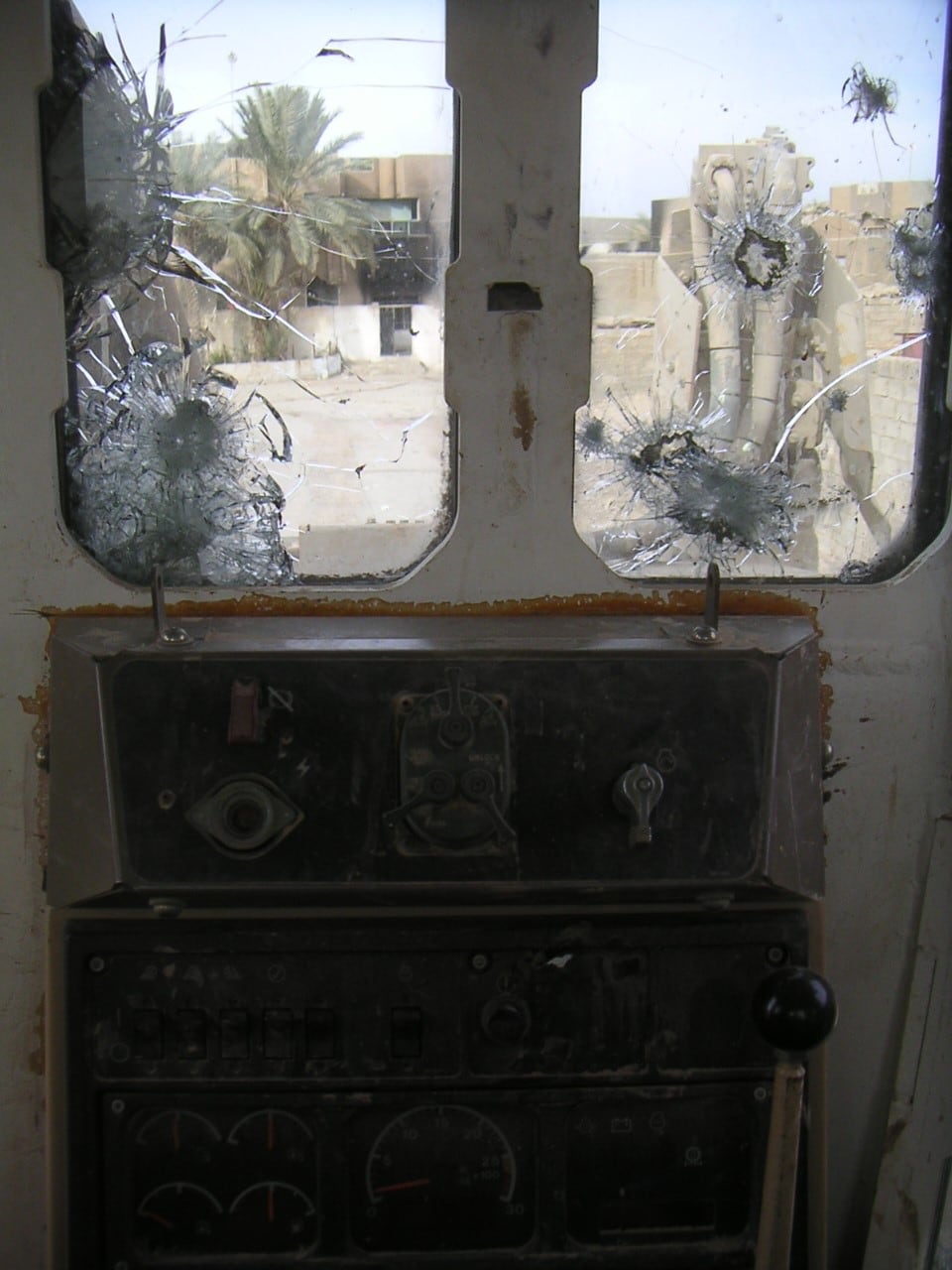
“We never really thought we’d ever have much significance in anything,” Berge told Marine Corps Times in a November interview.
But when something was wrong with the breach site, three dozers were tasked with giving the Marines an opening to the city, Berge said.
“We knocked over the curb and breached back out to make a quick road,” Berge said. The dozers moved some cars, and the Marines backed out and glanced at each other.
“We knew what was going to happen.”
They sat back and watched the Marine Corps invade Fallujah as rockets lit up the sky above.
It was three nights in that the Corps asked Berge and his fellow operators to take the bulldozers out and destroy positions from which the Marines were taking rocket-propelled grenade fire.
RELATED
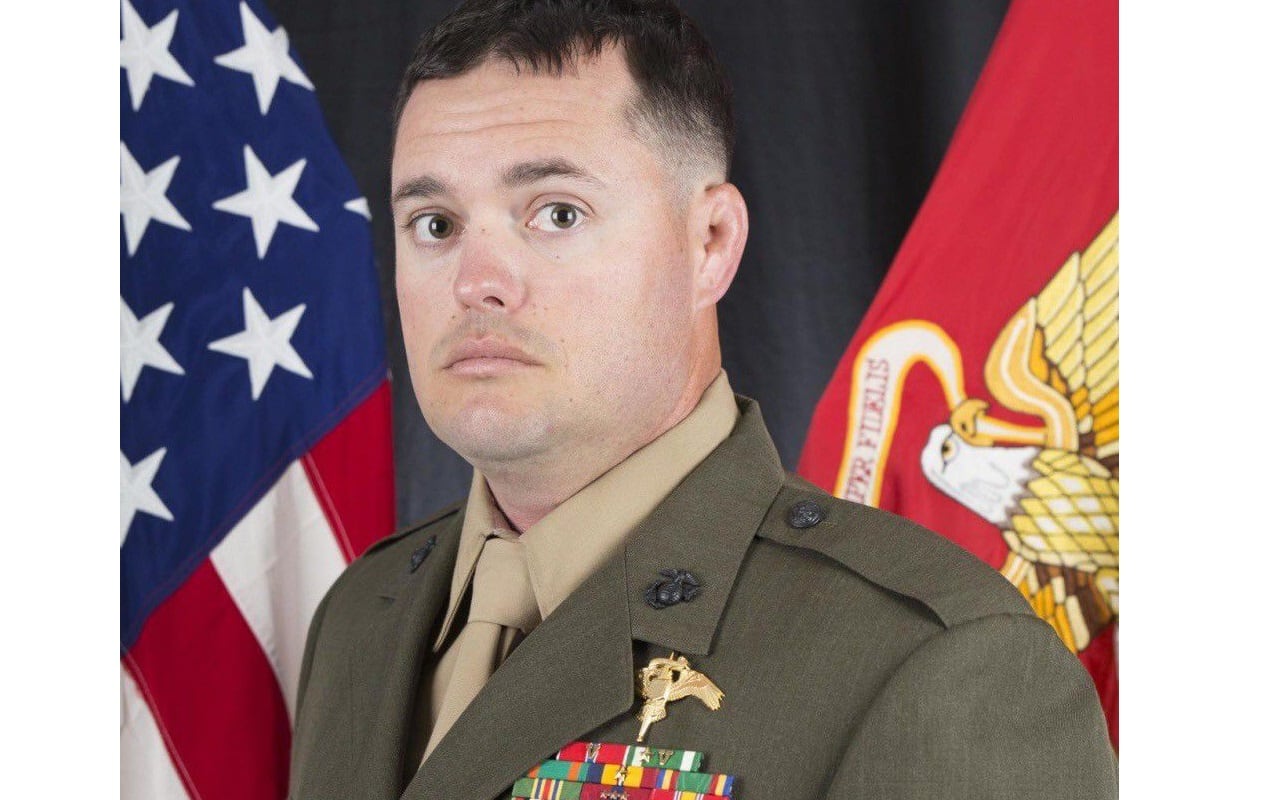
They took down a mosque and a bunch of surrounding buildings.
About a week after the invasion, the Corps decided to deploy the bulldozers into the city in a way they hadn’t probably tried since Vietnam, Berge said, to assist the infantry in “demolishing things and making roads.”
From their safe spot with seven-layers of bulletproof glass, it was often hard to watch the wreckage happening around them.
But that Thanksgiving Day, Berge knew that the Marines had the city under control.
“It was a complete feeling of gratitude, of thankfulness for making it through.”
‘No delusions’
Nearly 7,000 miles away in Lawrence, Kansas, Lance Cpl. Ryan Chapman was on convalescent leave and sitting down to Thanksgiving dinner with his immediate family.
The 0352 TOW gunner had been medically evacuated out of Iraq after getting shot above his left eye.
It wasn’t confirmed, but the alleged blonde-haired, blue-eyed sniper was apparently a Chechen mercenary, likely a paid-for professional fighter among the al-Qaida-led insurgents. Yet, Chapman had been shot from about 300-400 meters away by a rifle that should have killed him at twice that distance, he said.
Chapman liked sitting on the top of the truck. He had the best seat in the house, he said, “and the only form of air-conditioning you can get.”
He had gone on the deployment knowing it could get bad. The 24-year-old, who had joined the Corps after trying college and had celebrated his 21st birthday in boot camp, remembers the news from the first battle of Fallujah.
He remembers March 2004, when four U.S. contractors were dragged from their vehicles through the streets of Fallujah and eventually hung over a bridge.
“I was as mentally prepared as I could be,” Chapman said. “I had no delusions. I knew we were going to be going to Iraq.”
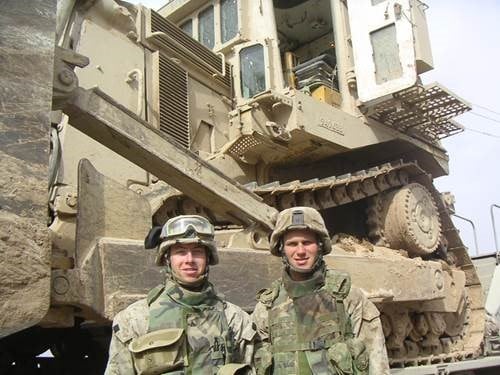
The Marines had flown over to Kuwait on a commercial flight.
“We packed in — a bunch of gear with you. The aisles of the airplane were pretty packed. To get to the toilet you had to walk on arm rests and crawl over gear.”
He was shot two days into the battle: Nov. 9, 2004. The last time he had looked at his watch it was 4:34 p.m.
Chapman’s memory jumps around a bit.
Machine-gun fire. An RPG shot. A plume of smoke. But he remembers the shot.
He remembers someone getting shot before him: An Iraqi National Guardsmen had been hit in the stomach area.
“We called out ‘sniper,’” Chapman said. “A single shot usually meant sniper.”
Chapman didn’t know where the sniper was, so he couldn’t return fire. He was in too close of quarters to shoot the TOW missile — the back blast would kill everyone — but he used the sight to search windows and scan the street.
“Zig zag, back and forth, and the next thing I know everything went white,” Chapman said.
He remembers reaching up to feel goggles, wax and blood.
It was the moment after a corpsman yanked open his eye, and Chapman realized he could still see, that he will remember forever.
“It doesn’t even hurt,” the Marine told the corpsman.
It was “the tone of [the corpman’s] voice,” he recalled. “Oh, it will.”
Chapman’s family hadn’t been thrilled he joined the Marine Corps, but now they were just thankful he was alive.
This Thanksgiving visit, Chapman had been woken up by his father banging on the wall.
The wake-up call was meant as sweet nostalgia, a reminder of days when Chapman had lived at home and his father would wake him up for school by turning on the lights or flipping the whole mattress to wake him up.
But now, the bang jolted the Marine, who had just returned from Iraq a few weeks before. He had a few angry words with his parents.
It was during that Thanksgiving visit that the Marine started realizing something else had permanently changed, his memory.
“Hey man, what’s going on.” Chapman remembers asking as he embraced his friend Josh when he arrived for a visit.
After a funny glance, he asked: “I’ve seen you since I’ve been back, haven’t I?”
“Man, I saw you yesterday. I hung out with you for four hours yesterday.”
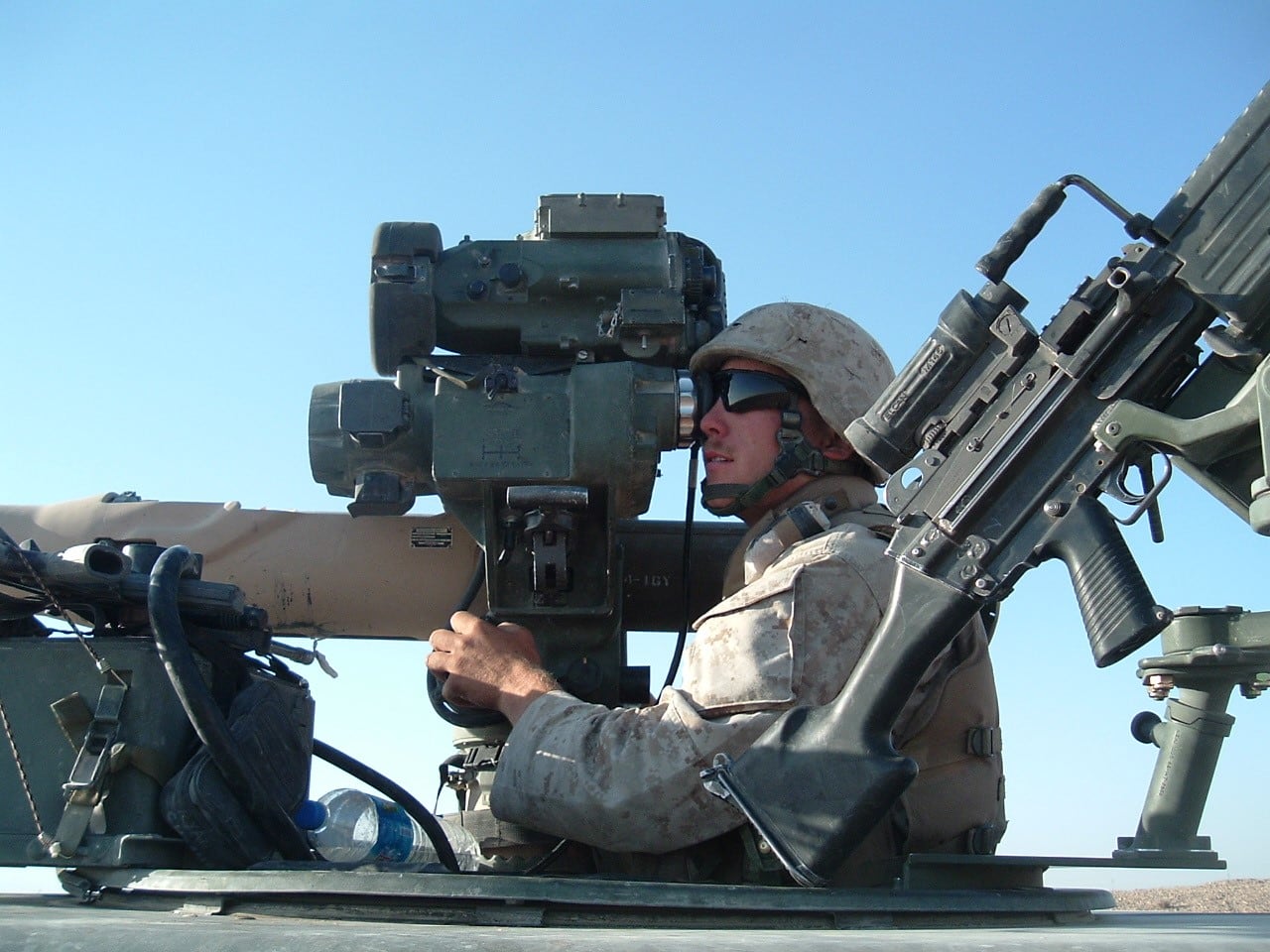
Injured and waiting back at Camp Pendleton, California, Chapman would scour the lists to see if he knew any names of Marines that had been injured or killed in the battle.
Often, he did.
Of nearly 12,000 U.S. troops in the second battle of Fallujah, less than 100 were killed. Hundreds were wounded.
Now, 15 years later, Chapman can’t wear hats that are too tight, and suffers from vertigo, debilitating headaches and short-term memory loss. An inability to sleep more than four hours a night contributed to the unraveling of his marriage.
But he’s one of the lucky ones. He doesn’t have symptoms of PTSD, he says; he has retrained his mind.
For a short time when he first got back to the States, Chapman often was on high alert — noticing piles of trash on the side of the road that would be good hiding places for IEDs.
But now those panics are a distant memory. It’s the aching throb in his head and the scar above his left eye, sometimes barely noticeable, that stay with him.
15 years
Marine veteran Jake Edwards was told he was crazy when he announced that he was going to lead an effort for a 15-year reunion for the second battle of Fallujah.
That was all the Virginian and Fallujah Marine vet needed to prove everybody wrong.
After much social media outreach, coordination and fundraising, more than 200 Marines and their guests traveled from across the country to the National Museum of the Marine Corps in Quantico, Virginia, on Nov. 15 for the reunion Edwards had put together.
It was important for many reasons, not in the very least the morale of the Marine veterans, many of whom are still suffering today.
At least 35 members of 3rd Battalion, 1st Marines, have died by suicide, Edwards told Marine Corps Times in a July interview at Quantico, Virginia. That’s more than the number of Marines 3/1 lost during the battle.
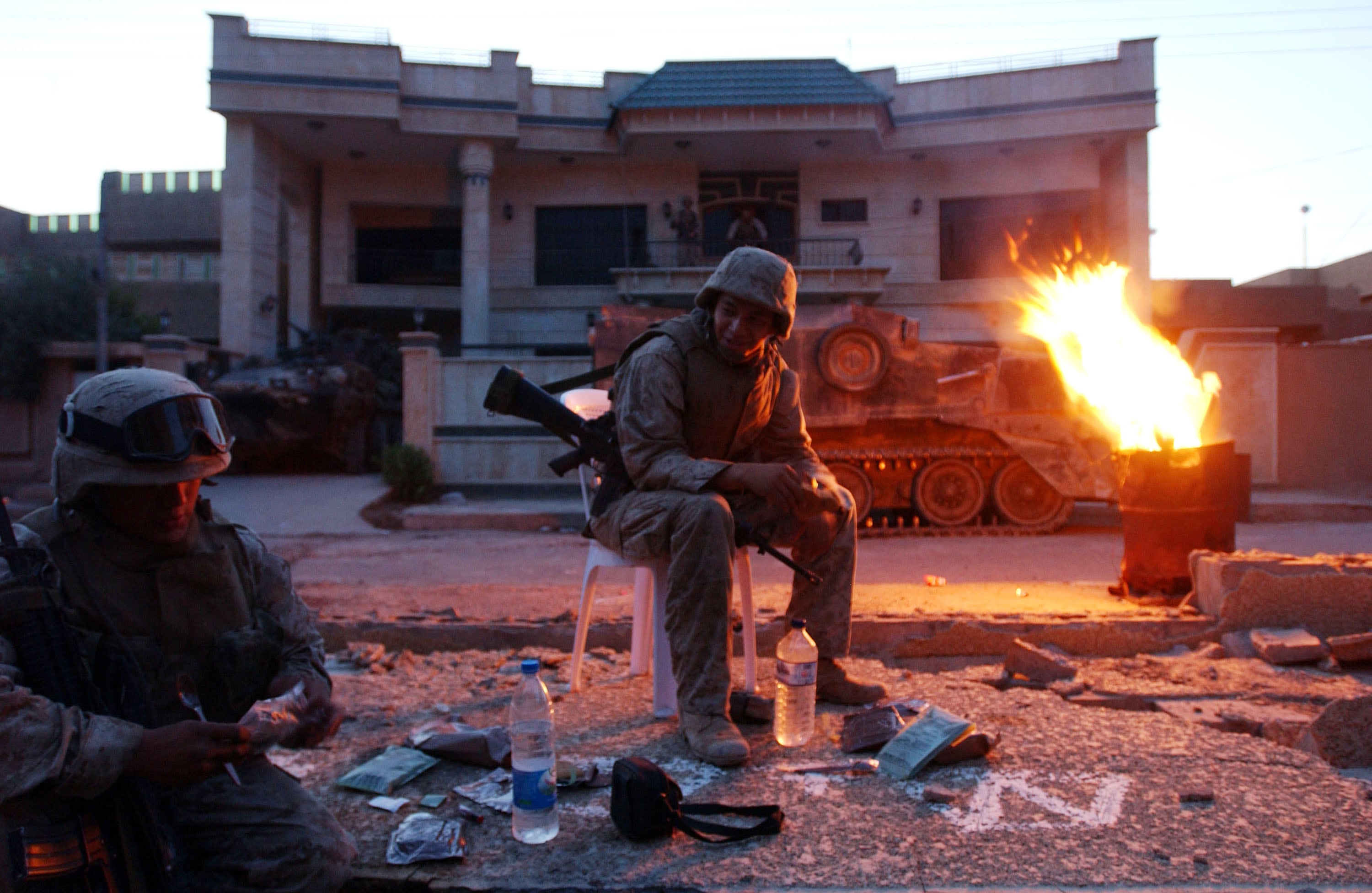
Edwards was a lance corporal and combat engineer at the time of the battle.
“Most reunions are unit based, this reunion is designed for all the warriors that shared the same battlefield together,” the event’s page said.
A new Fallujah exhibit at the museum initially had been scheduled to be open for the reunion, but the timeline for the main part of the new gallery has been pushed back to 2025, according to museum spokeswoman Gwenn Adams.
It didn’t break the mood.
For more than two hours, the colonels and the generals who devised and led Operation Al-Fajr shared with Marines what the battle was like for them.
Retired Army Gen. George Casey had been the top commander of U.S. forces in Iraq at the time of the battle. Retired Marine Lt. Gen. John F. Sattler had been the commanding general of the 1st Marine Expeditionary Force. Sgt. Maj. Carlton Kent, the retired 16th sergeant major of the Marine Corps, was there. Retired Lt. Gen. Richard F. Natonski, who had led the ground maneuver element under I MEF, gave a battle brief recalling the 2004 invasion. Retired Marine Col. Mike Shupp had been the commanding officer of the regimental combat team that secured the city. And more.
They were all there 15 years later, all stressing the importance of sticking together, and all giving credit to the Marines on the ground.
‘Didn’t take me out’
Like Chapman, Gunnery Sgt. Matthew Piano was another one of the lucky ones, also surviving a shot to the head during the battle.
On the inside of his Kevlar, the then-corporal had a picture of his family from upstate New York, showing him with his mother, brother and stepfather.
The shot — from a tall insurgent with a red bandana that Piano had seen across the street after his squad had halted in a destroyed building — had chillingly gone right through the Marine’s face in the photo, but left the image of his family untouched.
“It took my face out,” Piano said.
But, thankfully, in real life, it was not so.
“Somehow the bullet took my face out. But it didn’t take me out.”
The head shot didn’t register at first.
The infantry squad leader had stopped his Marines, and the next thing the corporal knew, he was awake on his back, knowing that he had gotten hit but not sure where.
“I don’t remember any pain actually,” Piano said. “I just know my helmet saved my life.”
To this day when a Marine drops his helmet on the ground, it still gets on the nerves of the now-gunnery sergeant, who is stationed with Headquarters & Service Battalion in Quantico, Virginia.
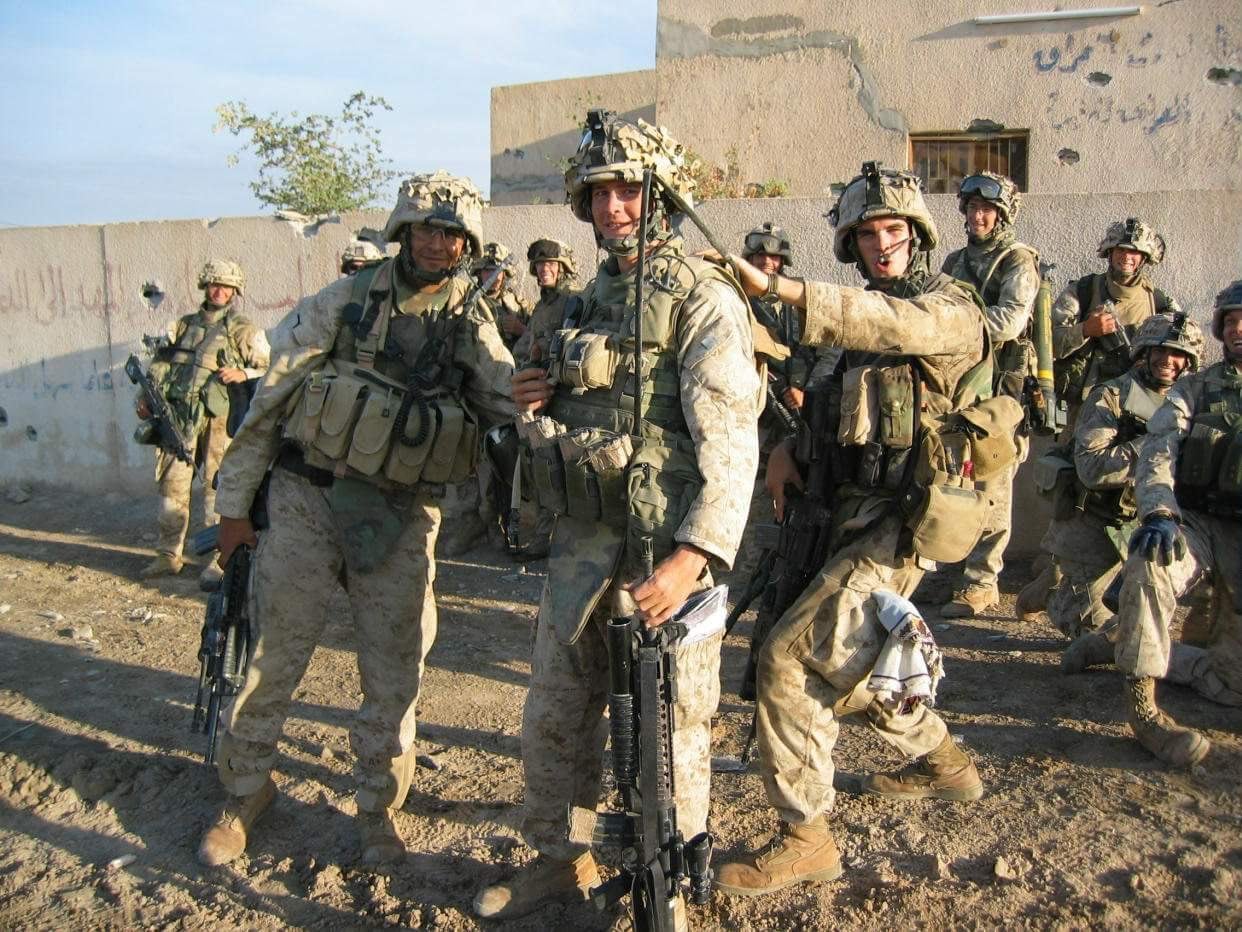
Take care of your gear, it will take care of you, Piano will tell the Marine.
He wasn’t able to keep his helmet that took that hit, but, like Chapman, Piano also has kept his headaches, and a bald spot where he had stitches. Piano can’t really predict his headaches, which happen quite often, he says: Sometimes they are daily, sometimes not. Sometimes they’re not that bad, sometimes they’re debilitating migraines.
He’s kept some little moments from the battle, even as his memory gets hazy 15 years later.
Piano remembers the day that Berge and the D9 bulldozers showed up.
“I was excited to have them help us clear houses.”
He also remembers animals eating dead bodies on the streets — specifically a cat eating the calf on an insurgent’s leg, a metallic iron smell wafting through the air.
He remembers his Marine buddy, who got shot in the arm and rotator cuff seven times and survived. That Marine is now a cop in Michigan, Piano says.
He remembers another Marine in his unit — India Company, 3rd Battalion, 1st Marines — getting hit by an RPG. It skipped off his Kevlar, and he survived.
He remembers Thanksgiving Day 2004, still wounded with a linear skull fracture, walking down the stairs to a feast in a hospital in Germany.
He remembers the kind nurse there who brought in a PlayStation for his hospital room. It helped him pass the time until he was sent back California — where he waited patiently for his Marines to eventually join him.
Andrea Scott is editor of Marine Corps Times. On Twitter: _andreascott.
Andrea Scott is editor of Marine Corps Times.





